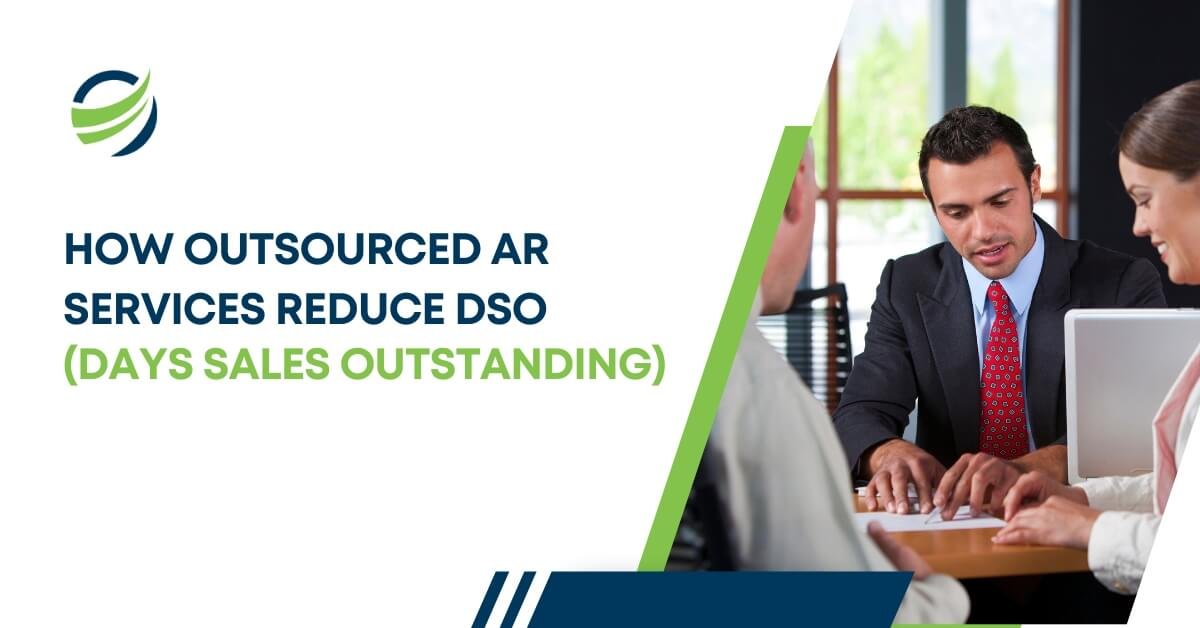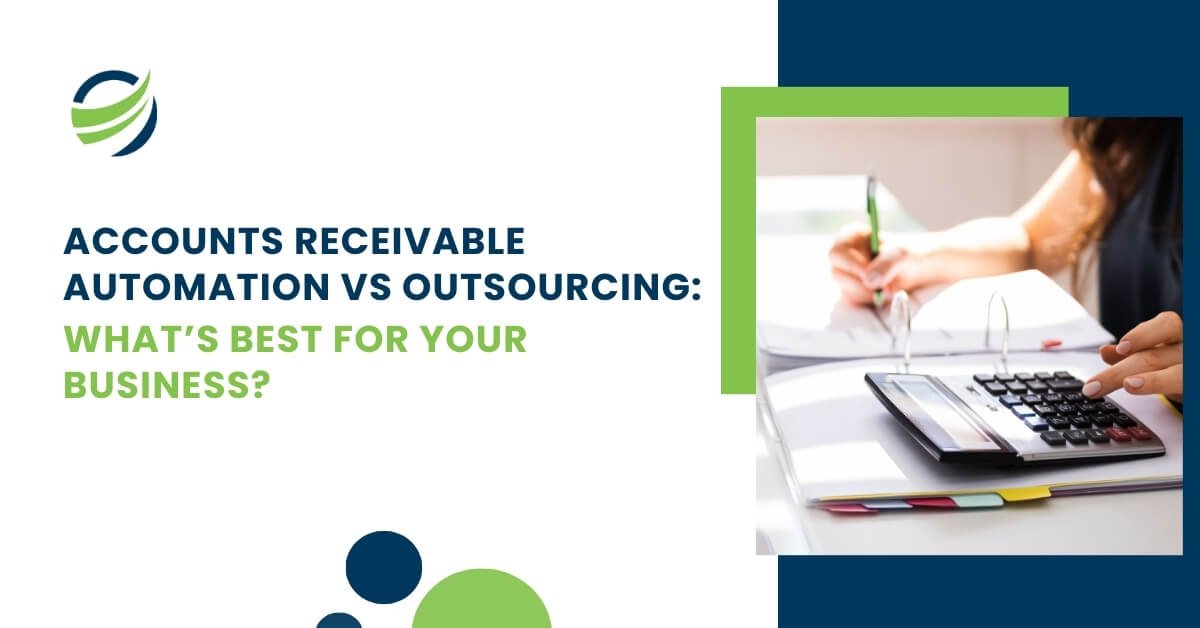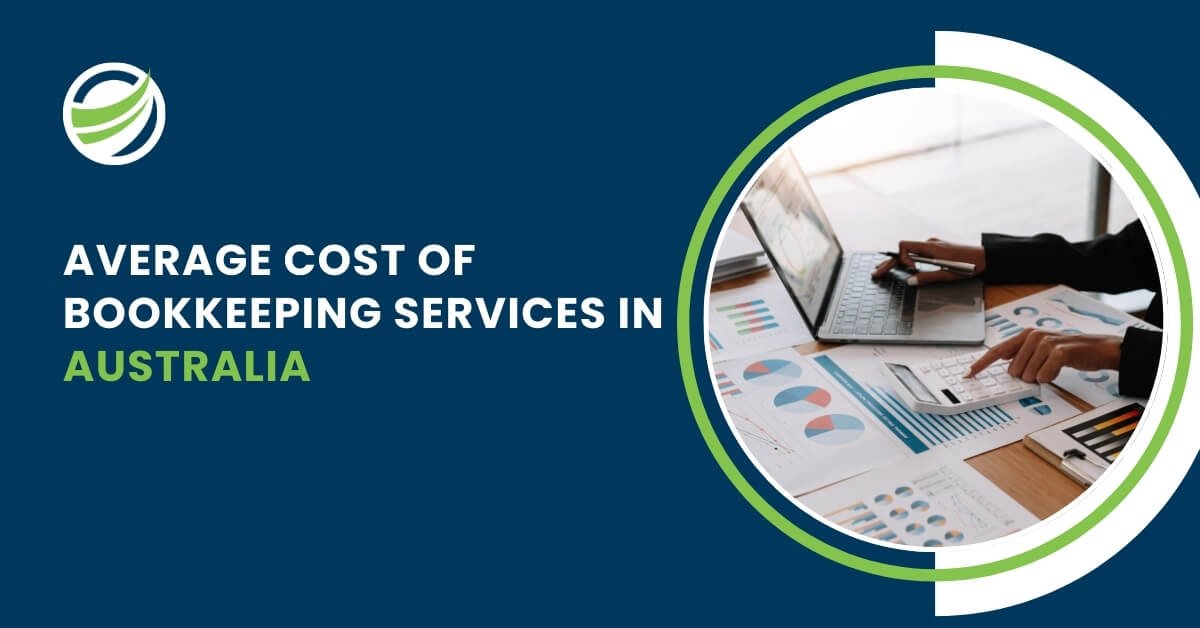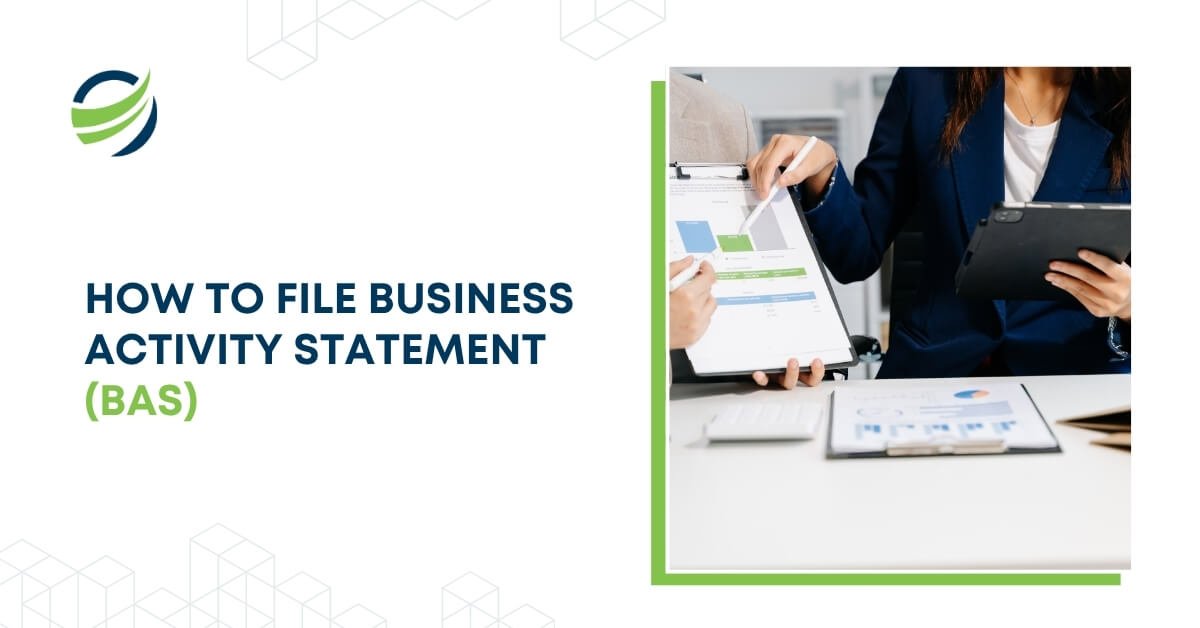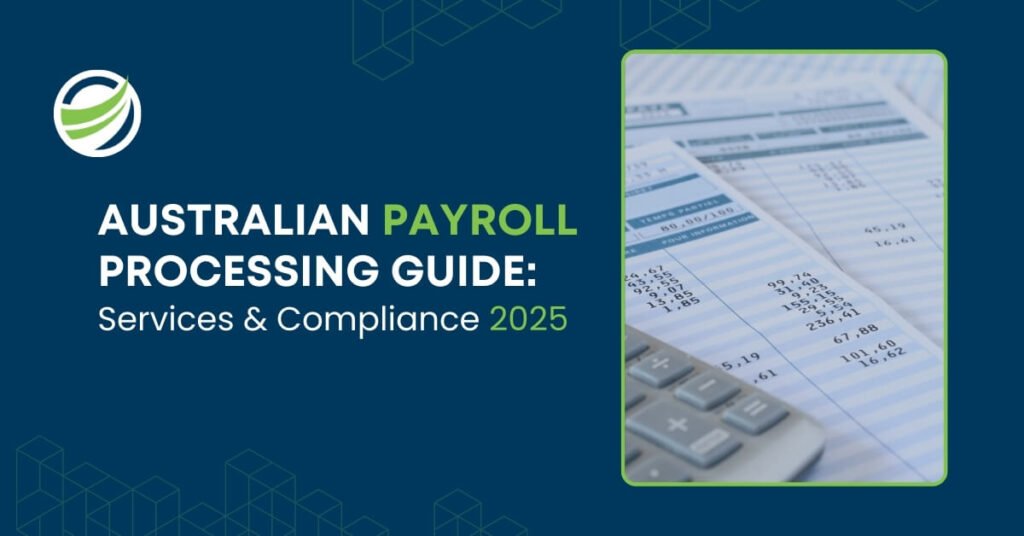
The Complete Guide to Payroll Processing in Australia
- Aesha Shah
- September 15, 2025
- 9 minutes
No matter whether your organisation employs five people or fifty, the rules of payroll in Australia remain the same: compliance is non-negotiable, and failing to meet obligations can lead to costly penalties.
That’s why understanding the fundamentals of payroll is essential, particularly for small and medium-sized businesses that may not have the advantage of an in-house payroll team. Without proper systems, managing wages, taxes, and entitlements can quickly become overwhelming. Many businesses now rely on payroll outsourcing and related solutions to ease this burden.
This Australian payroll processing guide will help you navigate the essentials with confidence, whether you handle payroll in-house or rely on professionals in payroll and accounting services in Australia, ensuring your business meets every requirement for payroll compliance in Australia.
Key Takeaways
- Payroll in Australia is complex, and compliance with ATO and Fair Work requirements is non-negotiable.
- Following 9 clear steps helps businesses process payroll accurately, on time, and in line with legislation.
- Payroll processing time depends on factors like workforce size, pay frequency, and the use of technology.
- Manual payroll is error-prone and resource-heavy, while automation and STP-enabled systems drive efficiency.
- Outsourcing payroll services offers time savings, expert compliance management, and scalable solutions.
What is Payroll Processing?
Payroll processing is the systematic handling of employee compensation covering wage calculations, deductions, and the timely distribution of payments, all while staying fully compliant with Australian taxation and employment laws.
The process requires businesses to accurately capture and maintain records of employee work hours, salary structures, and entitlements, ensuring that every payslip issued reflects precise and transparent information.
Australia is often regarded as having one of the world’s most complex payroll frameworks, and mistakes in this area can lead not only to dissatisfied employees but also to severe financial penalties and legal consequences under payroll compliance in Australia.
When managed effectively, payroll reduces admin burdens, ensures compliance, and builds employee trust. Accurate payroll boosts satisfaction, engagement, and a stronger workplace culture.
9 Steps for Effective Australian Payroll Processing
In this Australian payroll processing guide, we outline nine essential steps every business should follow to manage payroll accurately and efficiently.
These steps are designed to help organisations maintain compliance, minimise errors, and ensure employees are paid correctly and on time, foundations that are critical for both regulatory obligations and employee satisfaction.
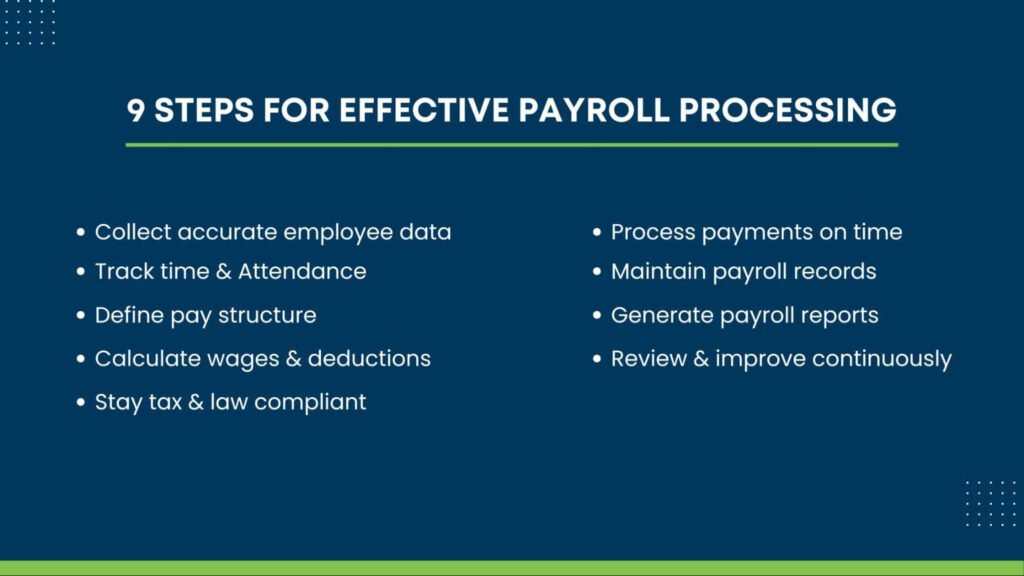
1. Complete Payroll Registration and Setup
Before you can begin the end to end payroll process, it’s essential to finalise all registration and setup requirements. This includes:
- Obtaining an Australian Business Number (ABN): An ABN is an 11-digit number that uniquely identifies your business for taxation and ATO reporting purposes.
- Registering for Pay As You Go (PAYG) Withholding: Employers must withhold income tax from employee wages and remit it to the ATO on their behalf.
- Managing Tax File Numbers (TFN): Ensure both your business and employees have TFNs, and that each employee completes a TFN Declaration form to enable accurate tax deductions.
- Opening a Business Bank Account: A dedicated account helps streamline payroll and accounting functions.
Additionally, businesses can leverage professional payroll management services in Australia to implement a robust end to end payroll process with tips, compliant with Single Touch Payroll (STP) Phase 2, which is now mandatory for reporting payroll data to the ATO. This is a critical step for achieving seamless payroll compliance in Australia.
2. Calculate Total Gross Pay
Once your setup is complete and your STP-compliant payroll system is in place, the next step is calculating employee gross pay. This involves multiplying the employee’s hourly rate by the total hours worked in the pay period.
Beyond base wages, you must also factor in overtime, annual leave, allowances, commissions, and bonuses. Neglecting to include these additional earnings can result in inaccurate tax calculations and incorrect deductions, creating compliance risks and employee dissatisfaction.
3. Calculate Payroll Taxes
Tax compliance is central to every payroll function. At this stage, you must ensure that the correct payroll taxes are withheld and remitted in accordance with ATO guidelines.
Accurate tax calculation not only protects your business from legal penalties but also ensures that employees receive the right net pay. Errors in this step can harm employee trust, strain relationships, and, in worst cases, result in financial or legal consequences for your organisation.
4. Identify and Apply Employee Deductions
In addition to taxes, employers must account for other deductions such as superannuation contributions, health insurance premiums, union fees, or salary sacrifice arrangements.
It’s important to distinguish between pre-tax and post-tax deductions and apply them at the correct stage of the end to end payroll process. Doing so ensures accuracy in payments and compliance with both employee agreements and legislative requirements.
5. Calculate Employee Net Pay
After applying taxes and deductions, the remaining amount is the employee’s net pay, commonly known as take-home pay.
This figure represents the final amount transferred to the employee for the pay period. Accuracy at this step is critical, as even minor errors can damage employee trust and create unnecessary administrative burdens.
6. Review and Approve Payroll
Before finalising payroll, a comprehensive review should be conducted to confirm accuracy and compliance. This review typically falls under the responsibility of the payroll manager, HR head, or business owner.
While it may be tempting to fast-track this step during busy times, approval acts as a safeguard against errors, discrepancies, or non-compliance.
A proper review not only protects the business but also ensures employees are paid correctly and on time, strengthening confidence in your payroll system.
7. Distribute Employee Payments and Payslips
Regardless of whether employees are paid weekly, fortnightly, or monthly, payroll must be processed on time. Timely payments build trust, enhance financial visibility, and demonstrate reliability within the organisation.
In addition to transferring wages, employers must provide each employee with a printed or electronic payslip for the pay period. Payslips are a legal requirement in Australia and must include gross earnings, deductions, net pay, and the number of hours worked.
Clear and transparent payslips not only meet compliance standards but also help employees understand their entitlements.
8. File Tax Reports Promptly
Once employees have been paid, the next step is to file all payroll tax reports and remit deductions to the Australian Taxation Office (ATO). Each payday, employers are required to submit payroll data via STP-enabled software.
Staying up to date with changes in payroll legislation, tax rates, and superannuation requirements is vital to avoid penalties. Trusted resources such as the Australian Taxation Office (ATO) and the Fair Work Ombudsman provide current guidance for businesses.
9. Maintain Accurate Payroll Records
The final step in the end to end payroll process is maintaining complete and accurate records. Businesses are legally required to keep payroll records for at least seven years, making it essential to store them securely and accessibly.
Many organisations now opt for cloud-based systems or partner with providers offering document digitization services, helping them maintain payroll compliance, improve data and protect sensitive employee information.
Maintaining detailed records of payroll transactions not only meets compliance standards but also supports smoother audits and informed business decision-making.
What Factors Affect Payroll Processing Time?
Payroll efficiency is not determined by a single step but by a combination of factors that influence how long it takes to complete the end to end payroll process. Understanding these variables can help businesses plan better, reduce delays, and ensure accuracy.
1. Accuracy of Employee Data
Accurate data entry is essential for seamless payroll operations. Details such as working hours, pay rates, deductions, and benefits must be recorded correctly. Any errors or discrepancies require time-consuming corrections, which can slow down payroll processing and delay payments.
2. Number of Employees
The size of your workforce has a direct impact on processing time. Larger organisations have more employee data to collect, verify, and reconcile, and calculating wages, deductions, and taxes is more complex and time-intensive.
3. Complexity of Payroll Structure
Not all payrolls are straightforward. Multiple pay rates, varying pay periods, overtime, commissions, superannuation, and student loan deductions all add complexity. The more intricate the structure, the greater the time required to ensure compliance and accuracy.
4. Payroll Frequency
How often employees are paid also impacts payroll processing time. Weekly or fortnightly runs, common in industries like retail and hospitality, require more resources, as data must be processed and verified more often. Monthly payments reduce the number of runs, making the process less time-consuming.
5. Internal Approval Processes
Approvals for timesheets, leave requests, or payroll changes are essential checkpoints that maintain compliance. However, delays in managerial approvals can create bottlenecks, slowing down payroll and potentially delaying payments to staff.
6. Payroll Processing Methods
The method used, manual or automated, plays a significant role. Manual payroll is slow, error-prone, and resource-intensive.
Automated solutions, by contrast, streamline calculations, reduce errors, and significantly improve efficiency.
7. Use of STP-Enabled Software
In Australia, payroll compliance requires Single Touch Payroll (STP) reporting. Employers must use STP-enabled payroll software to electronically report wages, PAYG withholding, and superannuation to the ATO at each pay cycle.
Manual reporting is not permitted, making technology an essential driver of payroll efficiency.
8. Outsourcing Payroll Services
Engaging professional payroll processing providers can significantly reduce delays and ensure accuracy, especially for businesses with larger or more complex payroll structures.
Outsourcing allows businesses to leverage specialist expertise, minimise errors, and free up internal resources for other priorities.
While it may come with additional costs, outsourcing often delivers long-term efficiency and compliance benefits.
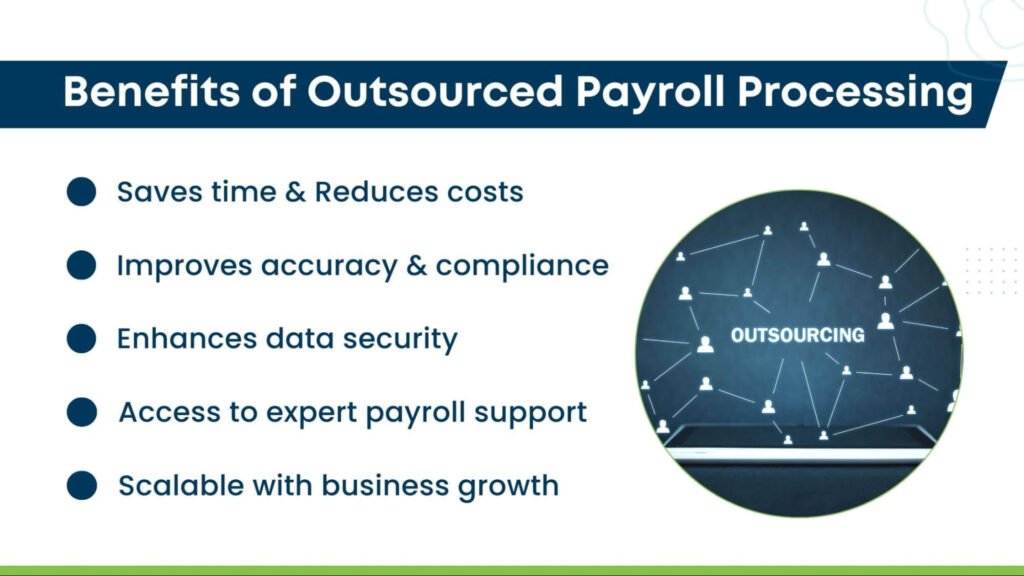
Benefits of Outsourced Payroll Processing
Managing payroll in-house can be complex and time-consuming. Partnering with payroll processing companies in Australia offers key advantages that extend beyond compliance:
- Time and Cost Savings: Outsourcing reduces the administrative burden on internal teams, freeing up resources for core business activities.
- Expert Compliance Management: Professional providers stay updated with ATO regulations, superannuation changes, and Fair Work requirements, minimising the risk of penalties.
- Accuracy and Reduced Errors: With advanced payroll management services in Australia, errors in wage calculations, deductions, and reporting are significantly reduced.
- Access to Technology: Outsourced providers often use sophisticated payroll software, ensuring streamlined processes and STP compliance.
- Scalability and Flexibility: Whether your workforce grows or contracts, payroll processing providers can adapt services to meet changing business needs.
For businesses looking to streamline payroll further, partnering with experts not only supports compliance but also complements other back-office solutions like outsourced bookkeeping services, SMSF outsourcing services, and financial compliance services.
Conclusion
Payroll is not just an administrative task; it’s a critical function affecting compliance, employee trust, and overall business efficiency. This Australian payroll processing guide has walked through the fundamentals, from registrations and tax calculations to reporting and record-keeping, while also exploring the factors that influence processing time.
For small and medium-sized businesses, partnering with payroll processing companies in Australia or connecting with payroll and accounting services in Australia ensures compliance and allows leaders to focus on strategic growth.
If you’re ready to streamline payroll and strengthen compliance, don’t wait; get in touch with NCS Australia today.



